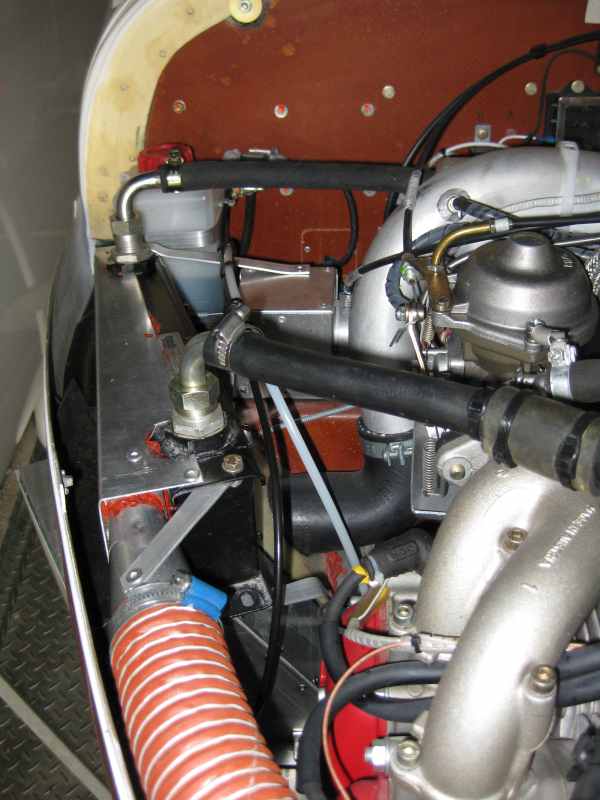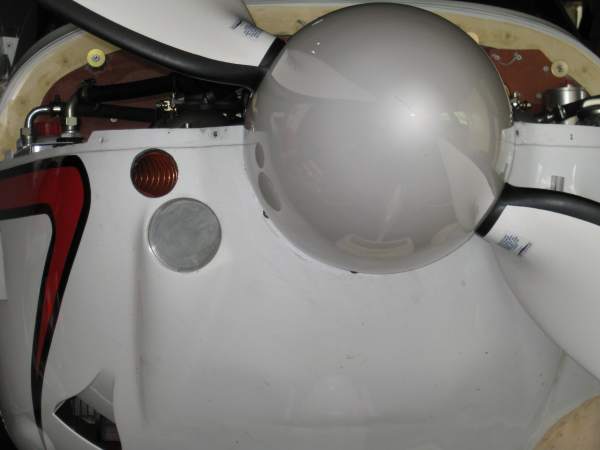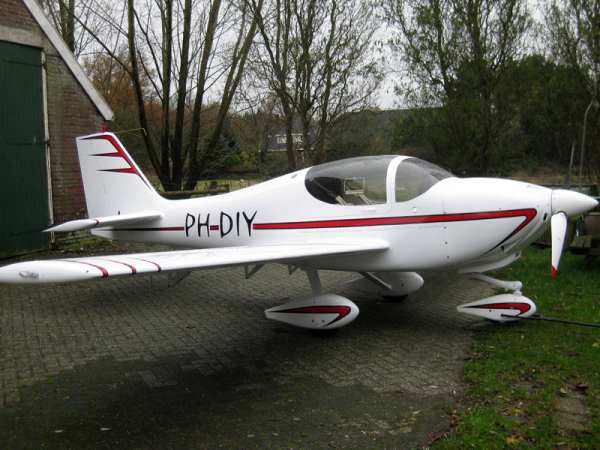frans(at)privatepilots.nl
Guest
|
 Posted: Thu Jun 10, 2010 4:45 am Post subject: Cooling issues, the solution, with pictures. Posted: Thu Jun 10, 2010 4:45 am Post subject: Cooling issues, the solution, with pictures. |
 |
|
As I received quite a few requests for pictures of my experimental
cooling setup, I decided to post them here.
Many of us experience cooling problems. Quite some people believe that
getting more air through the cowling is the solution. But as our Rotax
engine is fluid cooled, and not primarily air cooled like a lycosaurus,
I had my reservations against using more air to cool the engine. Sure it
will work, but at quite some costs. Air used for cooling shows up as
cooling drag into the equation. According to some literature, cooling
drag can account for 40% of the total airplane drag! So it is worth to
find a solution that works with minimal "air consumption".
A lot of people told me that lowering the oil radiator made quite an
improvement. I decided not just to lower the oil cooler, but to take it
out of the duct completely, and give it its own air inlet. And that made
an unbelievable change!
Picture 1:
The oil cooler, now mounted on the starboard footwell. A better place
would be in front of the port footwell, but as I have an intercooler, I
had to put the oil tank there, leaving not enough space for the oil
cooler there.
As first tests indicate, now the oil cooler is fed with cold air, it is
oversized. A smaller oil cooler would probably do as well.
The oil cooler has an aluminium wedge shape diffuser added to it. Air is
blown into this diffuser with a 2 inch scat tube.
The exit air of the radiator is just dumped inside the cowling.
The use of a scat tube makes it very easy to add a butterfly valve to
it, so to prevent the oil from cooling too much (or to allow it to warm
up quicker). I consider this a better option than to use an oil
thermostat: Thermostat's require more oil hose connections, and when you
don't need to cool the oil, precious air is still dragged through the
cooler. The valve is not yet installed here.
Picture 2:
The original 3 inch inlets are closed off by an aluminium plate. (Guess
some people will wonder whether I should be building RV's instead of
Europa's because of my liberal use of aluminium constructions.  ) Two ) Two
small naca ducts in the top cowling (not shown) provide air for cooling
the cylinders. They are more efficient than the round inlets because
they are aimed on top of the cylinders, forcing the air from top to bottom.
The smaller front opening just above the original air inlet is the inlet
for the oil cooler. This appears to be all that is needed! Can climb out
at 75 knots with 115% power, without the oil temperature increasing.
It is tale telling that such a small opening for air provides better
cooling than the original Europa setup with the two radiators in tandem.
Please keep in mind that all this is built as a "quick fix" to allow us
to keep flying. Cowling rework is scheduled for another time.
Picture 3:
The reason why I could not just lower the oil cooler. My cooling duct is
trimmed down considerably. It should perform better than the standard
Europa XS dog house, but of course it took out the option of "lowering
the oil radiator". I misunderstood the fragment in the build manual,
that lowering the oil radiator was an "option" for "hot climates". I
didn't consider our Dutch climat as a "hot climat".
The cooling duct is equipped with a servo controlled cowl flap.
Anyway, I have plenty of cooling now, with a very low drag setup.
Frans
| | - The Matronics Europa-List Email Forum - | | | Use the List Feature Navigator to browse the many List utilities available such as the Email Subscriptions page, Archive Search & Download, 7-Day Browse, Chat, FAQ, Photoshare, and much more:
http://www.matronics.com/Navigator?Europa-List |
|
| Description: |
|
| Filesize: |
52.04 KB |
| Viewed: |
1445 Time(s) |

|
| Description: |
|
| Filesize: |
26.51 KB |
| Viewed: |
1445 Time(s) |

|
| Description: |
|
| Filesize: |
37.54 KB |
| Viewed: |
1445 Time(s) |

|
|
|





